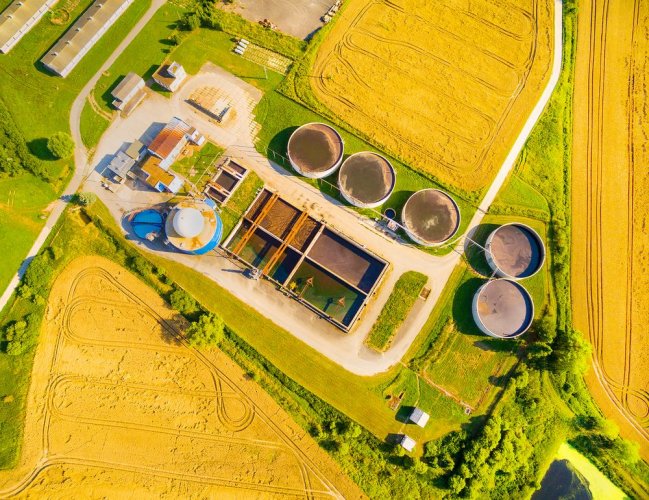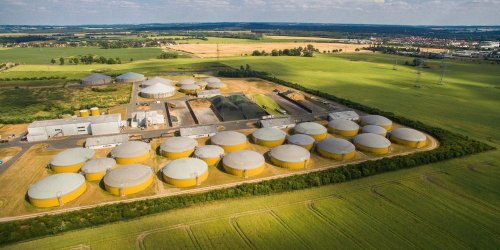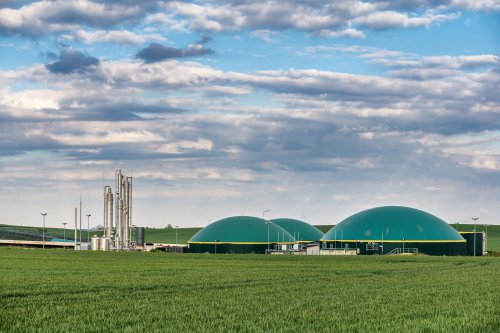The EU plans to replace more than a fifth part of russian gas imports with biomethane, which will help reduce carbon emissions and ensure energy security.
The European Biogas Association estimates that achieving this goal requires the construction of 1,000 large plants in less than eight years and about €40 billion in investment, reports Financial Times.
A new political base is needed to accelerate investment in the latest capacities.
The RePower EU strategy calls for doubling the region's target biomethane production to 35 billion cubic meters by 2030, 10 times more than today's production.
"There is no shortage of waste needed for biomethane production. The industry can use bio-products from all parts of the food system without requiring special energy crops that could disrupt food production," the article noted.
In addition, the fertilizer created from the biomethane production process will help farmers improve food security, reduce their carbon footprint and create jobs in rural areas.
The European biomethane industry is poised to scale after the transformation of the production approach in recent years. The small on-farm digesters that generated the most production have been replaced by a new generation of large, specialized plants that accept waste from many sources and supply gas to the grid rather than burning it on site.
For example, the plants built by Nature Energy, Europe's largest biomethane producer, are 10 times larger than the industry average. They produce gas much more efficiently than the old model and effectively capture methane.
Biomethane capacity can be developed relatively quickly. The new generation of power plants has a standardized design. This means that facilities can be built with the help of local contractors, avoiding the supply chain problems that are faced when developing large renewable energy facilities.
So, in Denmark five years ago, biomethane provided 5% of the country's needs, and now this figure has reached 25%. By 2030, biogas can completely replace natural gas.
EBA research shows that several EU countries, notably Germany, France, Italy, Spain and Poland, have the "right" combination of infrastructure and raw materials to follow this trajectory.
“Achieving the EU target will require the rapid development of a significant number of factories in many other places – capacity building in areas where industry has never worked at scale before. We need the right political support to make this happen,” the statement said.
Key steps governments should take:
- Selection and planning of the place of reform.
So far, it takes about 12 months to get a permit for a biomethane plant, and then 18 months for construction. Development can be greatly accelerated if governments identify points where an accelerated planning process will more likely give project developers confidence. They should have easy access to the existing gas network in order to make the most of the existing infrastructure.
- The new regulation should direct biowaste to biomethane plants within a radius of 25 km in order to provide the industry with the necessary raw materials.
This will complement broader EU ambitions to reduce the carbon footprint of the food and agriculture industry and help businesses such as supermarkets and restaurant chains meet their own food waste and carbon targets.
- While biomethane is competitive at current gas prices and is likely to remain so in the medium term, a price floor mechanism will help attract investment in the sector and accelerate deployment.
They are set for each country to reflect local market conditions, similar to the contracts for differences that supported the development of offshore wind power.
“Biomethane can quickly make a significant contribution to European energy security and emission reductions. The technology is ready. Now we need governments to create the rules that will enable us to achieve scale and pace to make the EU goal a reality.
Earlier, EcoPolitic wrote, that Ukraine can produce about 8 billion m3 of biogas per year, which will provide a quarter of gas for country's needs.
As EcoPolitic reported earlier, Ukraine can produce 1.6-1.9 million tons of biodiesel per year, which can become a full-fledged alternative to diesel, especially in a fuel crisis.





